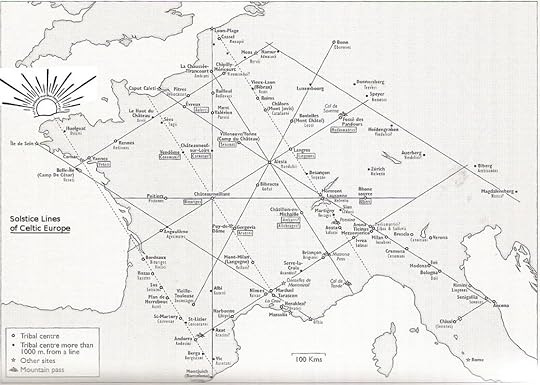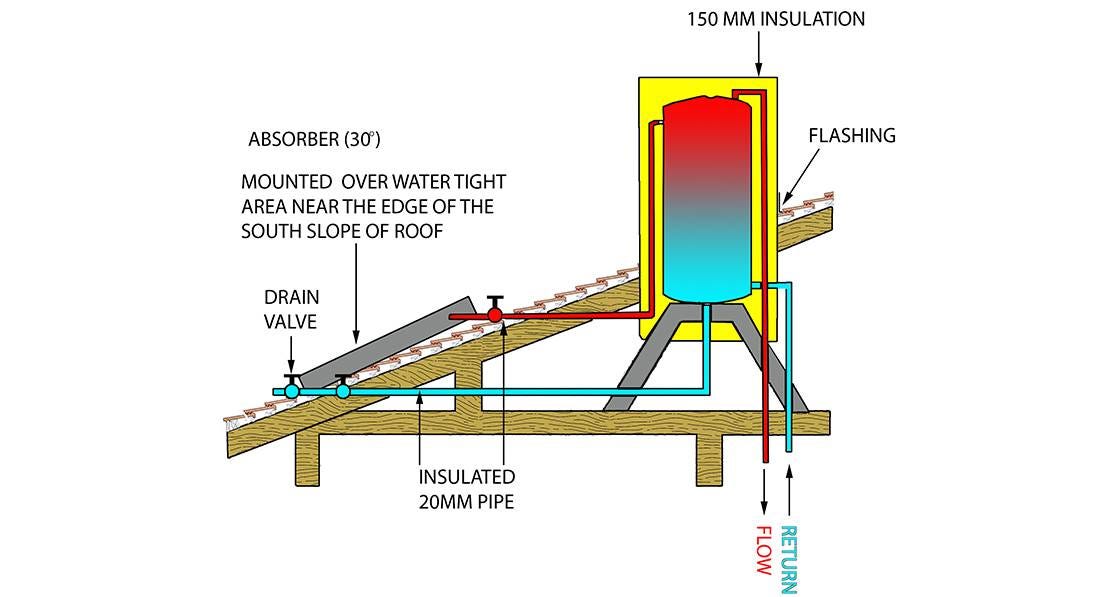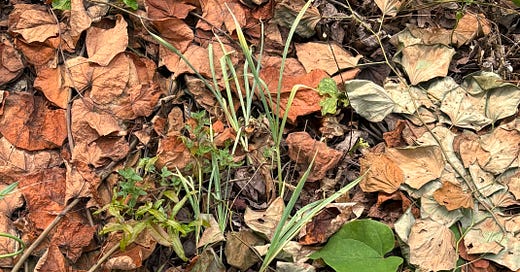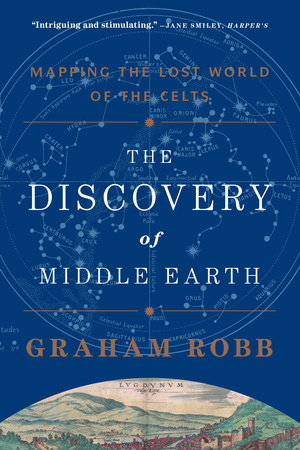Game Night Tonight!
We’ll be at Gate City Growlers at 6:30.
For Context
This twelve-year-old book claims that the Druids were much better astronomers than we give them credit for. The author says they designed a network of long roads that crisscrossed ancient Gaul aligned with the summer and winter solstices.

The most important of these was the Heraklean Way, based on the labors of the Celtic hero Ogmios, a more articulate golden-tongued hero that the Romans compared to their own Hercules (Herakles in Greek, “pride of Hera”) because he carried a club and wore a lion’s skin.

Robb says the Heraklean Way stretched from Portugal up into the Alps, where the sun would rise on the longest days of the year. Looking the other way along that line from the Sacred Promontory, the westernmost point of southern Spain, one could see the solstice sun set over the Atlantic, and that was where souls of the dead went (at least until they reincarnated). Robb further says this was the road Hannibal took with his elephants, deliberately trying to be the golden boy, covering himself in the sun-god’s glory as a form of psychological warfare against the Romans.
Any such network of roads would have taken generations to create. Robb has two chapters on the Druidic curriculum, which supposedly took twenty years to complete, almost twice as long as the 11-year Greek course. So the Celts had patience, plus a kind of citizen science, twenty centuries before us, plus what Robb calls a “vocal telegraph,” where people shouted along news in links on a chain, kind of like the signal fires in Tolkien’s Gondor, but requiring a lot more people. In other words, they were an advanced culture. They just didn’t write in their own language, and they mostly didn’t build in stone, so after Julius Caesar’s genocide their lively world just rotted away.
Critics accused Robb of cherry-picking his locations when the book came out, but unlike the ancient aliens enthusiasts from last week, Robb had a control condition for his geographic experiments. He says that the sites of the German Celts further east do not conform to his straight line networks because the Germans did not honor the Druids in the same way the Gauls did. So Robb might be wrong (I’m not expert enough to say), but from reading the book I do think he was at least attempting to do honest history.
It rained all week here
During gaps in the weather I dismembered a redbud tree with bow saw and loppers. There was a weak spot in the trunk (water damage). The branches were all heavy with seeds, hanging down like peas or beans in their flat pods. The rain weighed them down even more, and the trunk snapped.
Redbuds are nitrogen fixers with soft wood, fast-growing and short-lived. This tree is the second individual that has grown up in that same spot in the eighteen-ish years we’ve lived here. I might have planted the first one on purpose (I don’t remember), but now there are volunteer sprouts everywhere. The flowers are tasty. The seeds are not.
I clipped off the branch tips, this year’s new growth of broad heart-shaped leaves, and laid them down as mulch. The older twigs and seeds I tossed into the city’s gray plastic compost cans to be hauled away next week. The wood thicker than my thumb I kept for composting here.
I killed a chipmunk on Thor’s day
During a rare window of sun in the afternoon I went for a bike ride. As I climbed out of the tunnel under Cone Boulevard, where people have started sleeping recently, I watched a bird fly across the path in front of me. I don’t know if the chipmunk was chasing the bird, or if it was some kind of daredevil look at me mating behavior, or what.1
I do know that it darted directly under my front tire. I felt the soft bump through the frame and cursed. By the time I hit the brakes and got stopped, maybe fifteen feet past the bump, the chipmunk’s vibrating back legs were already slowing. The tiny pool of bright red blood coming out of its mouth on my way back indicated to me that I had crushed its rib cage and its lungs (maybe also its heart), but that brief kicking of the back legs said that maybe the spinal cord was still intact. There was nothing I could have done, but these are still the diagnostic thoughts that run through a biologist’s head. The training makes it automatic.
Chipmunks can supposedly live up to eight years in captivity. In the wild it’s more like two or three. Smaller animals live faster.2 Chipmunk hearts beat about five times faster than ours, when they aren’t hibernating. Maybe seven times faster, if we were in better shape. The urban legend about one billion beats is true as a statistical trend; it’s not much useful at the individual level.
In the book Robb talks a lot about sacrifices. The Romans were (in writing) horrified that the Celts didn’t bury their battle dead and that they sacrificed living humans to their gods. But what is a crucifixion (or any other public execution) if not a sacrifice to the state? What difference does it make if your enemy’s head is personally preserved (soaked in cedar oil) in a box in a place of honor in your house, or rotting alongside the Appian Way with 6,000 of his gladiator friends?3
I left the dead chipmunk there on the path as a free meal for whatever scavenger found it. I did not intend it as a political comment on the callous power of empire, or even an artistic reminder of ever-present Death, in the Buddhist sense, but I can’t control what people happening by do with their personal omens.
We had solar panels installed on Freya’s day
Photovoltaics are well over a hundred years old, having first been invented in 1881. They first came to my attention in the 1970s, probably when President Carter put them on the White House. I thought that was just the coolest thing. They were roughly a hundred times more expensive then, and so my highly cost-conscious and risk-averse parents were having none of that.
My first attempt was the solar water heater, an older technology (first recorded in 1760), which was basically a plexiglass box full of copper pipe that connected to a double-size commercial electric water heater.

This cost about $7,000 to install (40-50% of which we got back in rebates) and gave us cheap hot water for about fifteen years. We usually turned off the electric backup heater completely between May and October. We did use the backup during the winter, but even then it reduced the cost, which was very helpful when our teenager was taking 45-minute showers. That system lasted until our installer retired and we couldn’t find anyone to service it. When we got the metal roof a couple years ago, we gave the panels to the roofers because they had a truck big enough to haul them to the scrap yard and recover the valuable copper.
Then, last fall, after literally decades of watching PV prices fall and arguing endlessly about this issue with my co-home-owner, my mother died and left me enough money to just do it. I joined a bulk-buying initiative called Solarize the Triad, which hooked us up with a company out of Charlotte. That led to six months of back-and-forth over design and permitting (Duke Power does not make it easy) before the five-hour installation on Friday, involving a five-person rooftop crew on the carport and a four-person crew doing the electrician stuff on the side of the house.
One of the interns on the rooftop crew was a former Natural Science student of mine from Governor’s School. I think she had fewer tattoos then.4 Four years later, she is now a senior at App State, in Sustainable Technology and the Built Environment.
So my mother’s sunset pays for sunrise over my new PV panels, and (in part) for my student’s eventual degree. The obnoxiously obvious joke about passing the torch is even more obvious from the GS logo.
Hidden Things
The same day as the PV installation there was a city sewer contractor in the neighborhood, prepping to replace the lining of a sewer line, which is apparently a euphemism for sliding a narrower new pipe inside an old rusty pipe, which is cheaper than digging it up and replacing it.5

We had our water meter marked with a stick in the ground, but they had to spend fifteen minutes or so tromping around with a chirpy little scanner thing to find what they called the “clean-out,” a fitting with a brass square on the top of it that could supposedly be used to find and diagnose a blockage. It was totally buried. In fact there was a strawberry plant growing on top of it, which I’ve now moved to a window box on the porch.
Solstice Break
Next Monday I start a temp gig with the Institute for Regenerative Medicine at Wake Forest in Winston. I’ll be there for about eight weeks, through the end of July, and during that time I’ll be re-running relevant newsletters from earlier years that have fallen behind the paywall.
The Druids were right. We need some way of simplifying and organizing time and space. Our three-pound brains need help. So how should I choose those reruns?
Until August, thanks for reading!
I can imagine a group of chipmunks sitting in the shadows, telling each other stories of past exploits, and then, seeing a car approach, one of them says, “OK, taking bets here. How much will you put up to see if I can make it across? Quickly now, the car's almost here.”
https://www.fosters.com/story/news/2010/08/08/extreme-chipmunks/63206098007/
Rob Dunn at NC State and the NC Museum of Natural Sciences has a citizen science project on this.
Plutarch's account of the revolt suggests that the slaves simply wished to escape to freedom and leave Roman territory by way of Cisalpine Gaul. Appian and Florus describe the revolt as a civil war in which the slaves intended to capture the city of Rome. The Third Servile War had significant and far-reaching effects on Rome's broader history. Pompey and Crassus exploited their successes to further their political careers, using their public acclaim and the implied threat of their legions to sway the consular elections of 70 BC in their favor. Their actions as consuls greatly furthered the subversion of Roman political institutions and contributed to the transformation of the Roman Republic into the Roman Empire.
That last summer in ‘21, fresh off the pandemic, got a little crazy. I had high schoolers reading Stephen Batchelor, who writes a lot about death, and we used rotten hamburger to recreate John James Audubon’s olfactory experiments with turkey vultures, only we were the vultures. More science history on bird smell here.
The city’s stated goal is to do 1% of the network each year, which means it would take 100 years to cover the whole thing. According to their own website it seems to be going a little slower than that.
Greensboro's first sewer rehab project took place in 1995 and consisted of slip-lining almost two miles of sewer pipe. Since then, the City has rehabbed more than 130 miles of sewer lines [out of 1,400 total].
So in 30 years they’ve done 130/1400=0.0928, or less than 10%.






